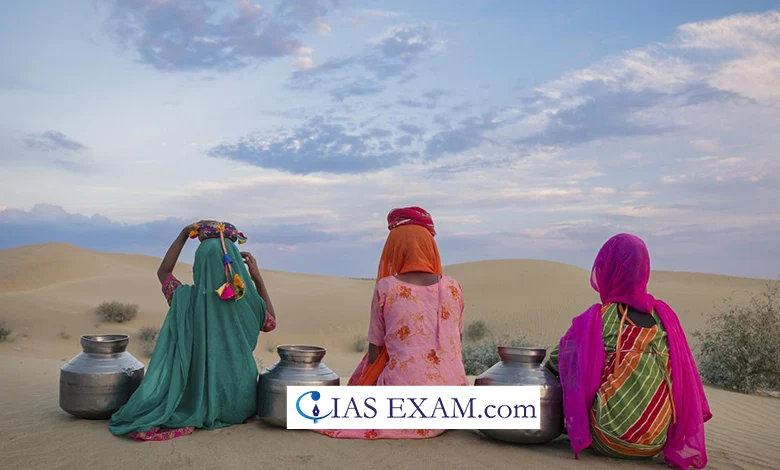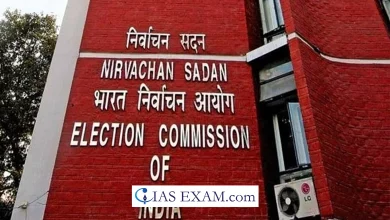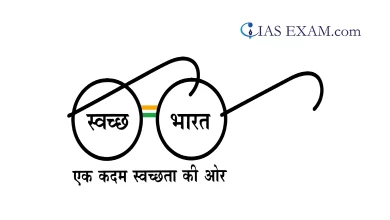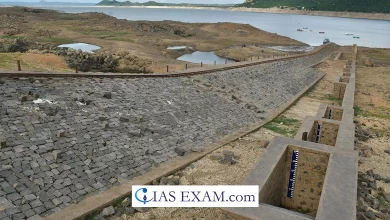Making Climate Crisis Gender Neutral in India
GS Paper 2 - Welfare Schemes, Issues related to Women

Context
The climate crisis has already begun and does not affect everyone evenly. Women and girls face disproportionately high health risks, particularly in poverty, due to established roles, obligations, and cultural norms. According to the United Nations Development Programme (UNDP), women and children are 14 times more likely than males to be killed in a disaster.
The Supreme Court of India has determined that individuals have a right to be free of the negative impacts of climate change, and the right to a clean environment is already recognized as a basic right within the scope of the right to life.
Relation between Climate Change and Women
- Health Concerns – Women often bear the burden of climate-related health concerns because of their jobs as main caregivers and biological vulnerability. Heatwaves, extreme weather events, and the growth of vector-borne illnesses like malaria and dengue fever may all pose additional health risks.
- Livelihood & Income – Women, particularly in rural parts of developing countries, rely disproportionately on climate-sensitive industries such as agriculture and forestry for a living. Climate change-related problems such as unexpected weather patterns, droughts, floods, and soil degradation can all impair agricultural output, resulting in revenue loss and food insecurity for women farmers.
- Education – Climate catastrophes, such as floods and storms, can affect children’s education by causing infrastructure damage and school closures. In many civilizations, females are more inclined to withdraw from school during such crises, either for safety reasons or to take on more caregiving obligations.
- Water & Sanitation – Women and girls are frequently responsible for water collection and management in families, especially in rural regions. Climate change-induced water shortages and pollution can make collecting water more time-consuming and difficult, restricting women’s possibilities for education, money creation, and community involvement.
How does Climate Change impact Women?
- Gender biased Violence – According to a 2021 assessment by the Council on Energy, Environment, and Water (CEEW), 75% of Indian areas are vulnerable to hydromet catastrophes such floods, droughts, and cyclones. According to NFHS 5 statistics, more than half of the women and children in these areas face these risks.
- Prolonged Heat Waves – The last decade has been the warmest ever recorded in human history, and nations like India are expected to see historic heatwaves. Pregnant women are especially vulnerable to prolonged heat exposure. Similarly, air pollution (both inside and outdoors) impacts women’s health, causing respiratory and cardiovascular illness, as well as the unborn child’s physical and cognitive development.
- Disproportionate Burden – It is noted that extreme weather events due to climate change disproportionately affect women and girls and their ability to perform their everyday tasks, which partly explains why some girls are forced to drop out of school.
- Impact of Migration – Extreme weather events have been reported to cause greater rural-to-urban migration among males in several nations, putting women in control of land, household, and other traditionally male-dominated responsibilities.
Impact of Climate Change on Women in Agriculture
- Food Insecurity – Women have an important role in food production, processing, and distribution in families and communities. Climate change consequences, such as crop failures, water scarcity, and shifting rainfall patterns, can have a direct influence on women’s capacity to provide food security for their families.
- Extreme Events disrupts Farm Operations – Changing weather patterns and severe occurrences have a significant influence on women’s responsibilities in agriculture. Variable rainfall and extended droughts weaken agricultural output, putting farming-dependent households’ food security at risk.
- Economic Implications – Climate change has significant economic ramifications for women working in agriculture. Floods and major weather disasters can ruin crops and infrastructure, forcing women to prioritize family care and alternate revenue sources. Reduced agricultural yields owing to extreme weather occurrences translate into lower incomes, increasing existing gender disparities.
- Vulnerability due to Lack of Resources – Cultural norms and discriminatory behaviors limit women’s access to land ownership, which is a valuable asset in agriculture. Women’s lack of ownership over their assets limits their access to credit, loans, and insurance, leaving them exposed to climate-related losses.
Measures to make Climate Crisis Gender Neutral
- Multi-Dimensional Empowerment of Women – If we are to meet the Paris Agreement target of limiting global temperature rise to 1.5°C, we must engage the whole population in climate action. At the same time, empowering women results in better climate solutions; when given equal access to resources as males, women boosted agricultural output by 20% to 30%.
- Encouraging Local Solutions – Tribal and rural women, in particular, have played a leading role in environmental protection. Giving women and women’s collectives (Self-help Groups and Farmer Producer Organizations) information, skills, and access to resources will foster the development of local solutions. Adaptation strategies will undoubtedly differ across rural and urban locations due to differences in heat exposure, air pollution, and availability to water and food.
- Involving ULBs and Municipalities – Urban local governments, municipal corporations, and district authorities in all susceptible districts must have a strategy in place, as well as provide key implementers with training and resources. Longer-term initiatives include urban planning to promote tree cover, reducing concrete, expanding green-blue areas, and developing housing that is more resilient to harmful effects.
- Mapping Key Water Resources – Water scarcity is perhaps the greatest hazard to our basic existence, necessitating collective community action. Historically, India had one of the most advanced systems for rainwater gathering and storage, consisting of ponds and canals.
Way Forward
Climate change has a varied and disproportionate impact on women, aggravating already existing gender disparities and vulnerabilities. Women have a tremendous burden in adapting to and reducing the consequences of climate change, spanning livelihoods, health, education, and relocation. Addressing these gendered implications necessitates comprehensive methods that promote women’s empowerment, access to resources, and meaningful involvement in decision-making. By recognizing and addressing the specific problems that women confront, we can cultivate resilience, promote gender equality, and create a more sustainable and equitable future for everyone.
SOURCE: The Hindu





.png)



